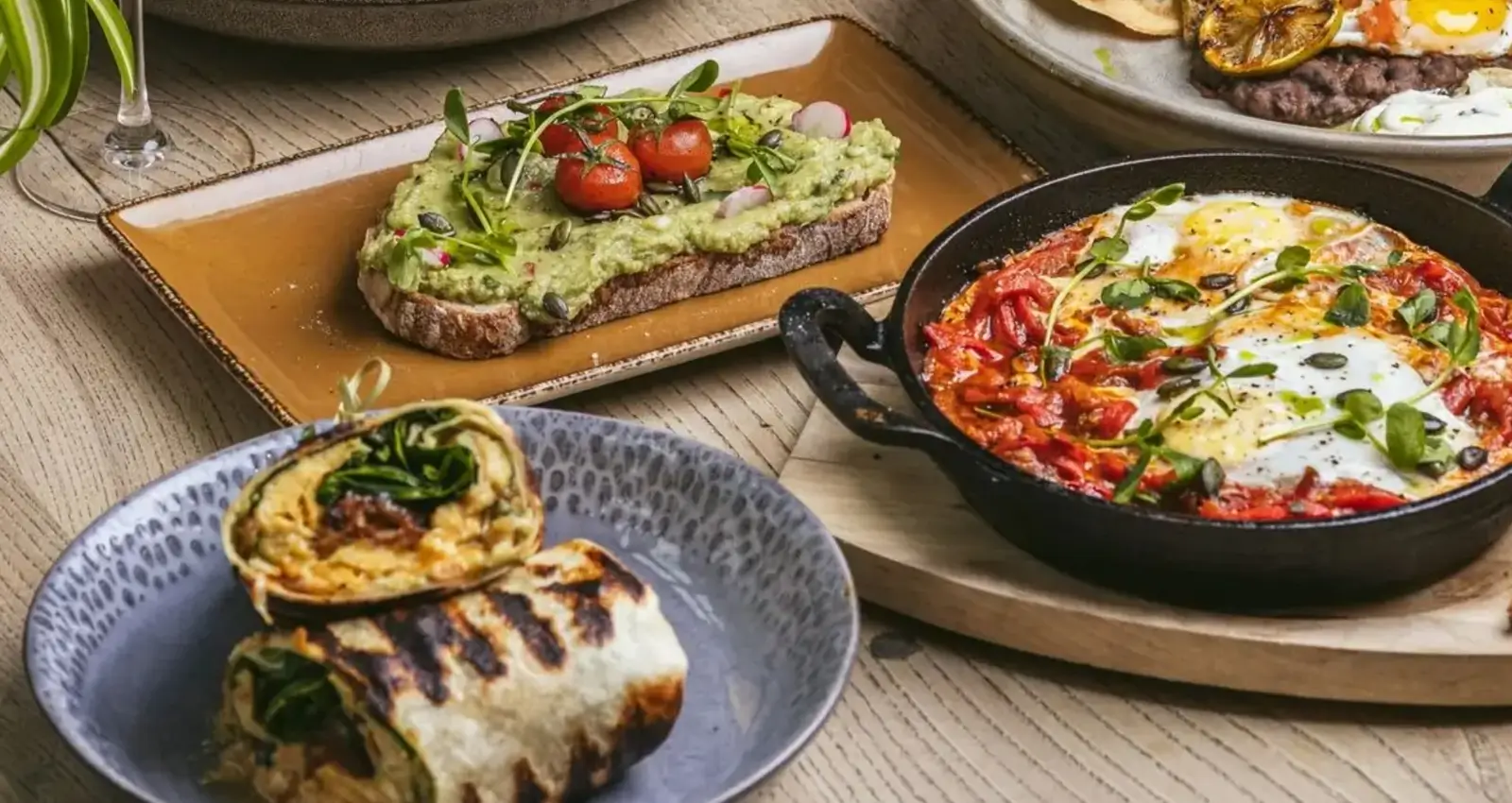High blood pressure, or hypertension, is the force exerted by your blood on your blood vessels as it circulates. When this pressure is excessive, it gradually harms your arteries, making it a silent but severe condition impacting millions worldwide. In the U.S., approximately half the population experiences it, according to the National Heart, Lung, and Blood Institute (NHLBI). Often, hypertension develops without clear symptoms but can lead to serious health issues like heart disease, stroke, and kidney problems, earning it the nickname “the silent killer.” While genetics and age contribute, lifestyle choices, particularly diet, are major factors. A 2010 review in The Annual Review of Nutrition shows that diet can either maintain healthy blood pressure or push it into dangerous levels. Therefore, a heart-healthy diet is recommended for those managing blood pressure.
Starting your day with a heart-healthy breakfast can help maintain stable blood pressure and support weight management, crucial for controlling hypertension. The American Heart Association (AHA) suggests a diet that replaces unhealthy saturated fats with healthy unsaturated ones and is rich in fiber from fruits, vegetables, and whole grains for heart health. Nutrients like nitrates can also be beneficial. This article offers ten nutrient-rich breakfast ideas to aid in better blood pressure and healthier weight.
Oatmeal with berries and chia seeds
A warm oatmeal bowl with chia seeds and fresh berries is a comforting, powerhouse breakfast for lowering high blood pressure and supporting a healthy weight. Oats, as a heart-friendly grain, are rich in beta-glucan, a soluble fiber that aids blood pressure control by enhancing insulin resistance and reducing blood cholesterol, as explained in a 2011 article in the Journal of Nutrition and Metabolism. This fiber also helps control appetite, potentially leading to weight loss.
Additionally, chia seeds, high in fiber and omega-3 fatty acids, may further support heart health, as consuming these seeds is linked to reduced blood pressure (via Healthline). A 2025 review in Clinical Therapeutics found that chia seed intake significantly lowered both systolic and diastolic blood pressure. Berries like blueberries, strawberries, or raspberries add flavor and antioxidants, which, according to a 2022 review in Nutrients, improve blood pressure by reducing vascular stiffness. This recipe is not only nutritious and customizable but also easy to prepare. You can even make it ahead as an overnight oats version and warm it for the next day.
Avocado toast on whole-grain bread
Despite the avocado toast trend fading, this recipe is worth keeping for heart and weight support. Avocados are rich in potassium, a mineral balancing sodium’s effects and supporting healthy blood pressure levels. They’re also high in monounsaturated fats and antioxidants, which can lower cholesterol and improve vascular function, as noted in a 2017 review in Nutrients. Avocado’s fiber content, though lesser-known, is linked to better weight outcomes.
Whole-grain bread, due to its minimal processing, provides nutrients like dietary fiber, potassium, magnesium, folate, iron, and selenium, which help lower blood pressure and promote fullness, aiding weight loss. Eating up to three servings of whole-grain foods daily might control blood pressure as effectively as medication (via Medical News Today). Enjoying this breakfast provides heart-nourishing nutrients, but avoid heavily salted toppings to maintain its heart-healthy benefits.
Greek yogurt parfait with nuts and fruit
If you’re seeking a quick, heart-healthy breakfast on the go, a Greek yogurt parfait with fresh fruit and nuts is an excellent choice. Greek yogurt, higher in protein than regular yogurt, enhances satiety and metabolism, aiding weight management. As a fermented dairy product, it contains probiotics beneficial for gut health. A 2013 study in the British Journal of Nutrition found that consuming dairy-derived probiotics significantly reduced blood pressure. Opt for plain, unsweetened Greek yogurt to avoid excess sugar.
Nuts, providing crunch and healthy fats, magnesium, and potassium, offer blood pressure benefits, as per a 2010 study in Clinical Nutrition. Fruit adds natural sweetness and heart-healthy minerals. Fruits high in potassium and magnesium, along with fiber, are central to the DASH diet for hypertension management (via the NHLBI).
Spinach and mushroom egg white omelet
Egg white omelets are popular for weight loss due to their lower fat content. They also offer blood pressure benefits, as egg whites contain RVPSL, a protein with a natural blood pressure-lowering effect similar to some medications (via Science Daily). Adding spinach and mushrooms enhances heart health benefits.
Spinach is rich in nitrates, converted to nitric oxide (NO) in the body, which lowers blood pressure by relaxing blood vessels, as a 2015 study in Clinical Nutrition Research indicates. Mushrooms like shiitake, reishi, and maitake may also lower blood pressure by relaxing blood vessels (via Springer Nature). Both spinach and mushrooms provide fiber and low-calorie content, supporting weight control. Pair this omelet with whole-grain toast for a balanced breakfast.
Kale smoothie with banana and flax seeds
A kale smoothie with banana and flax seeds offers a refreshing, nutrient-packed breakfast for healthy blood pressure and weight management. Kale, a nutrient-dense cruciferous vegetable, is rich in antioxidants, fiber, and minerals, with blood pressure-lowering benefits. Higher intake of cruciferous vegetables is linked to reduced systolic blood pressure (via Medical News Today).
Bananas provide natural sugars and potassium. A medium banana covers 11% of men’s and up to 16% of women’s daily potassium needs (via the AHA). Flax seeds, rich in omega-3 fatty acids, particularly alpha-linolenic acid (ALA), are linked to lower blood pressure, as a 2014 study in the American Heart Association Journal notes. They’re also high in fiber, promoting fullness and aiding digestion and weight loss.
Quinoa breakfast bowl with berries and almond butter
Quinoa, often reserved for lunch or dinner, can make a cozy breakfast bowl. This ancient grain has heart health benefits; a 2024 review in Frontiers in Nutrition suggests it may lower blood pressure by inhibiting an enzyme that tightens blood vessels. It is a complete protein containing all essential amino acids and provides fiber, aiding weight loss (via the AHA).
Berries bring antioxidants and polyphenols linked to lower blood pressure. A 2022 review in Nutrients found berries significantly reduced both systolic and diastolic blood pressure. Almond butter adds a creamy texture and heart-healthy monounsaturated fats. To prepare, cook quinoa in water or plant-based milk, top with berries and almond butter.
Tofu scramble with turmeric and vegetables
A tofu scramble with turmeric and vegetables is a flavorful, plant-based breakfast alternative to traditional scrambled eggs, boosting heart health. The AHA states that adding 20 grams of plant-based proteins like tofu can reduce hypertension risk by up to 16%. Soy-based foods like tofu are linked to lower blood pressure due to isoflavones, compounds that increase NO levels and improve blood vessel elasticity (via Science Daily).
Turmeric adds a golden hue and health benefits. Curcumin, turmeric’s active compound, lowers blood pressure through multiple mechanisms, as a 2022 article in Frontiers in Physiology notes. Adding vegetables like spinach, bell peppers, or tomatoes enhances flavor and provides fiber, antioxidants, vitamins, and minerals for blood pressure regulation. To make a tofu scramble, crumble firm tofu in a skillet with olive oil, sauté with turmeric and vegetables, and season to taste.
Buckwheat pancakes with strawberries and yogurt
To enjoy pancakes without compromising heart health, try buckwheat pancakes topped with strawberries and yogurt. Buckwheat, a gluten-free seed, supports cardiovascular health with nutrients like rutin, magnesium, and fiber.
Topping with strawberries sweetens the recipe and supports healthy blood pressure. Eating more strawberries has been associated with a 34% reduced risk of heart attacks, likely due to high anthocyanin content, which helps relax blood vessels (via Harvard Health Publishing). Yogurt adds probiotics, calcium, magnesium, and potassium, positively affecting blood pressure, as a 2022 study in the International Dairy Journal shows.
Breakfast wrap with hummus and veggies
A breakfast wrap with hummus and fresh vegetables is a savory, nutrient-packed start to your day, supporting heart health. Hummus, made from chickpeas, offers plant-based protein, fiber, potassium, and magnesium for blood pressure management and weight control.
Adding a mix of fresh vegetables like spinach, bell peppers, cucumbers, or carrots adds crunch, flavor, and essential nutrients valued in the DASH diet for reducing high blood pressure (via the NHLBI). Wrapping in a whole-grain tortilla adds fiber and supports steady energy. To assemble, spread hummus on a tortilla, add veggies, and season with herbs, lemon juice, or seeds before wrapping.
Beetroot juice smoothie with banana and yogurt
A beetroot juice smoothie with banana and yogurt offers a vibrant breakfast for lowering blood pressure. Beetroot juice is rich in dietary nitrates, regulating blood flow by relaxing blood vessels. A 2024 review in Nutrition, Metabolism, and Cardiovascular Diseases links it to lower systolic blood pressure.
Bananas add texture, sweetness, potassium, and magnesium, essential for blood pressure control. Yogurt, whether low-fat plain or Greek, adds creaminess, protein, probiotics, and heart-healthy minerals. Protein enhances satiety, and a 2021 study in the International Dairy Journal shows the remaining nutrients support healthy blood pressure. Blend all ingredients with ice cubes for a refreshing smoothie.




